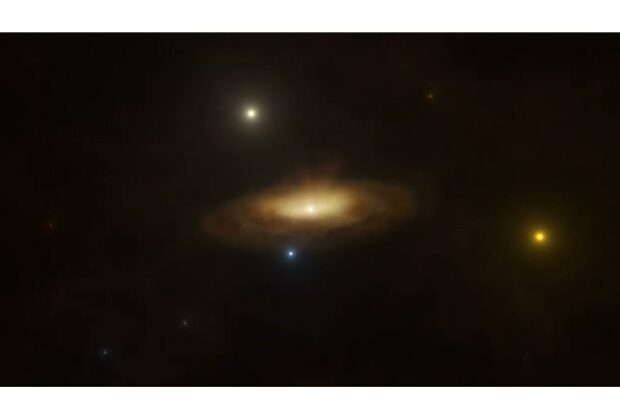The abrupt emergence of a large black hole that is one million times more massive than the sun and the center of the star system are responsible for the enigmatic brightening of a galaxy that is very far away.
After decades of studies, astronomers discovered nothing noteworthy about the far-off galaxy in the Virgo constellation. However, around the end of 2019, they noted a sharp increase in the galaxy’s luminosity that continues to this day.
Since a great deal of material is falling into the black hole at the center of the galaxy, it is putting on an incredible cosmic light show that scientists think has never been witnessed before.
At the European Southern Observatory headquarters in Garching, Germany, staff astronomer Dr. Paula Sánchez-Sáez stated, “We discovered this source at the moment it started to show these variations in luminosity.” “It’s the first time we’ve see this in real time.”
Astronomers were alerted to the 300 million-light-year-distance galaxy, known by the snappy moniker SDSS1335+0728, in December 2019 when the Zwicky Transient Facility, a California observatory, saw an abrupt increase in its brightness.
The warning sparked a rush of fresh observations and verifications of previously recorded data from space and terrestrial telescopes to learn more about the galaxy and its historical behavior.
The galaxy has lately doubled in brightness in the mid-infrared, increased four times in the ultraviolet, and at least ten times in the X-ray spectrum, the scientists found.
It’s unknown what caused the abrupt brightening, but according to research published in Astronomy and Astrophysics, the most plausible theory is the formation of a “active galactic nucleus,” or the center of a galaxy, where a massive black hole begins actively consuming the material around it.
When the gas surrounding a black hole heats up and glows, and as nearby dust particles absorb certain wavelengths and reradiate others, active galactic nuclei release a wide spectrum of light.
However, it is not the sole option. The highly circumspect term “tidal disruption event,” which refers to a star that is torn apart after veering too close to a black hole, has not been ruled out by the researchers.
In general, tidal disruption events are transient, illuminating a galaxy for a few hundred days at most, but additional data are required to exclude the process. “It’s impossible to distinguish which of these scenarios is real with the data we have at this time,” Sánchez-Sáe stated.z. “We need to keep monitoring the source.”








